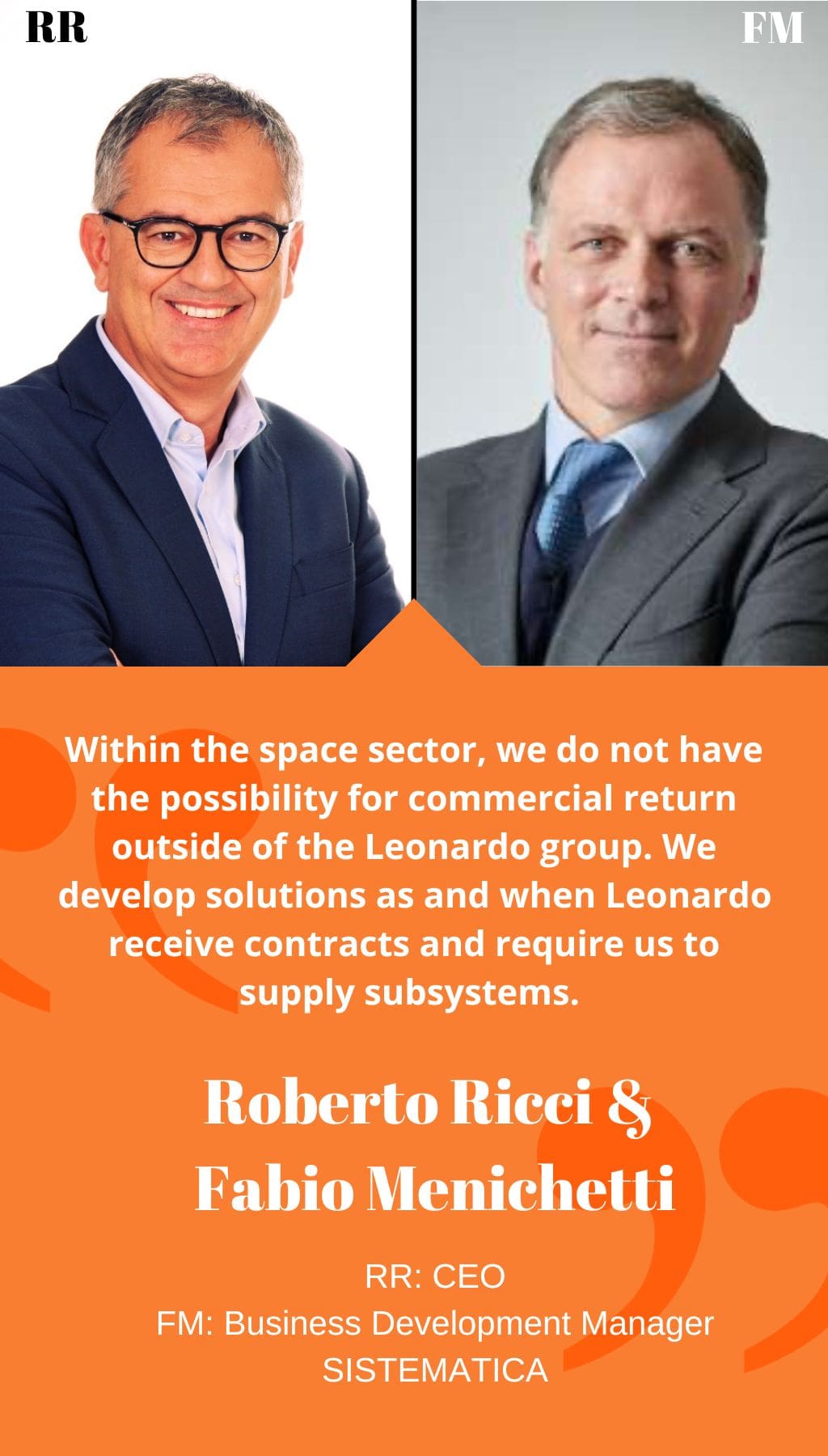
- Italy | 31 August 2018

Sistematica was established in 1996. Can you give us an overview of the company’s history over the past 20 years?
RR: Sistematica was founded by myself, coming from a background in Telespazio, with a focus on industrial automation and space. Our involvement in infomobility started early on, with projects like the Italian Processing Archiving Facility (IPAF) which was part of a European program. We also participated in the Shuttle Radar Topography Mission which aimed to create a three-dimensional map of the world using a radar mounted on a shuttle with sensors from Italy and the USA. We also worked on a precursor of GPS without the use of a cellular network. With our experience, we worked on further projects with ViaSat and OctoTelematics, one of the big infomobility players in Europe. We also created the space business line and worked on the Galileo project for five to six years. Today, 30% of our revenue comes from the infomobility sector and space and aeronautics account for 20%. All our space and aeronautics business is conducted with Leonardo.
What are Sistematica’s key capabilities within the space and aeronautics realm?
FM: We created a subsystem of the COSMO-SkyMed constellation to process acquired data and generate images for the final customer. We were also requested to create the same infrastructure for Thales Alenia Space in the Korean program KOMPSAT-5, where we realized not only the production infrastructure and some processes, but also the calibration systems for the sensors on the satellite.
RR: We don’t have a strong presence in the international market. As a small company in the space sector, it’s difficult to work within the international environment. We typically work on international projects as subcontractors for Italian companies. We have worked and collaborated with Leonardo for 20 years, and I’m concerned that if we approach the customer directly, we will not only be unsuccessful in acquiring the contract, but also risk losing Leonardo as a customer.
FM: We have tried collaborating with other companies, but we do not find the associations beneficial. We don’t need to participate in the clusters, but we operate within the START consortium, which is not a regional cluster but a group of ten companies, in which we are participating on a bid for EUMETSAT along with Thales Alenia Space.
What are some of the limitations of working on institutional contracts?
RR: Many of the programs we participate in are supported by the Italian Space Agency (ASI) and the Italian Ministry of Defense. If we work with the Ministry of Defense, for example, we are tied to that one customer, and we are unable to profit further from our solutions. For example, we have created a much more accurate map than Google using radar data, but the MOD does not allow us to use this system commercially. In other applications, such as land management, agriculture or natural disasters, we could see a huge commercial return.
What are your key goals for growth within the space sector?
RR: Within the space sector, we do not have the possibility for commercial return outside of the Leonardo group. We develop solutions as and when Leonardo receive contracts and require us to supply subsystems. We plan to focus on the Galileo program and the second-generation COSMO-SkyMed constellation. We are also in the process of acquiring a contract on a new subsystem as part of an ESA project within Horizon 2020. However, our key area of focus will be in the expansion of our energy management sector, in which we plan to invest a great deal.














